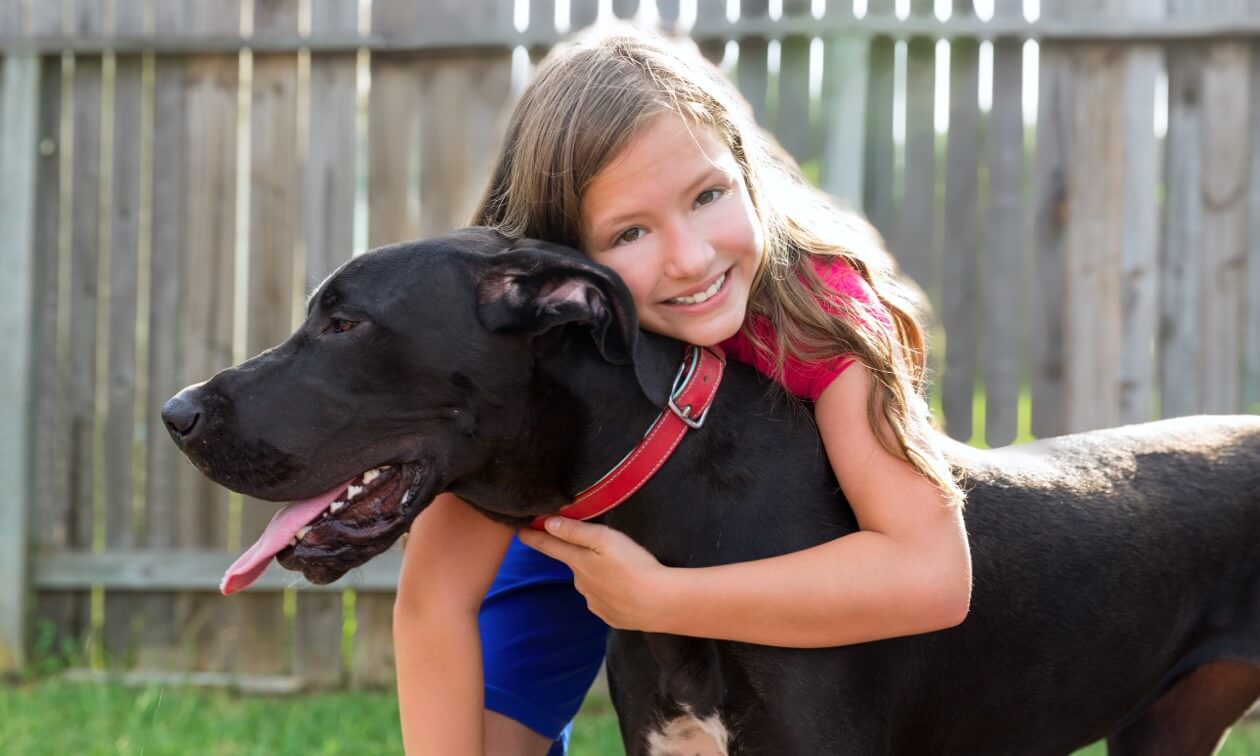Have you ever wondered how a dog sees the world? Not only do they see everything from a much lower perspective, but they also have a different field of view than we do. Because their eyes are set a bit wider than our forward-facing eyes, they can see 250 degrees around themselves, compared to a human’s 190-degree field of view.1 Dogs also see much better at night and see motion better than humans — but what about how they see colors?
Are Dogs Colorblind?
Dogs are not completely colorblind, but they don’t see as many colors as we do. Dogs have di-chromatic vision, meaning they have two types of cones in their retinas. Humans are tri-chromatic, with three types of cones in the retina, meaning more colors can be interpreted by the brain.
What Colors Can Dogs See?
Dogs can see blue, yellow, and any shades or combination of these colors. If an item has no blue or yellow in it, dogs will see the item in shades of grey (thanks to the rods in their eyes that distinguish light). Dogs also do not see red. Dogs see colors the same way a person with red-green colorblindness sees the world (something red will appear as a shade of grey, blue, or yellow, depending on its tone).
Can Dogs See Ultraviolet Light?
Scientists have found that dogs are more sensitive to UV light than people. Their eyes were found to allow over 61% of UV light to pass through to the retina, compared to almost zero for humans.2 Does this affect what colors your dog sees? Not so much. But this sensitivity to UV light can make it easier to see at night and better spot camouflaged prey. Not to mention that it highlights urine — helping your dog find that pee mail they need to “read.”
How Does the Eye See Color?
Now that we know which colors dogs can see, let’s learn how they see. The retina is the part of the eye that sorts through vision, sending information to the brain through rods and cones. Rods are responsible for sorting through the presence of light and have nothing to do with sensing color. Cones are activated by different wavelengths of light, and signals from different types of cones are interpreted by the brain as different colors. It’s these cones that vary from humans to dogs to other species and impact the ability to see color.
Why Should You Care What Colors Your Dog Can See?
It’s important to consider contrast in color through your dog’s eyes for a few reasons. First, it can help you choose a toy that your dog can more easily see when you throw it in a field. Another way keeping color in mind is helpful is to highlight stairs or other surfaces that your dog needs to navigate safely.
The best contrast of color is yellow against blue. This is why you often see dog agility equipment painted in blocks of yellow and blue, making it easier for them to see where the obstacle begins and ends. If you want to help your dog navigate stairs or other obstacles, use a pattern of yellow on blue or black for easy-to-see contrast.
While orange may appear bright and obvious to us as a combination of yellow and red, it will appear either yellow or green to a dog. That’s because the red hues that make up the orange do not show. An orange toy or ball may appear yellow against the green grass, but if it has a green hue, it will be hard for your dog to find. If you’re looking for a toy your dog can easily see, choose a shade of yellow or blue.
ZPC-02228R1
- Can Dogs See Long Distance? Wag. https://wagwalking.com/sense/can-dogs-see-long-distance. Accessed October 3, 2022.
- Can Dogs See In Ultraviolet? Stanley Coren PhD., DSc, FRSC. https://www.psychologytoday.com/us/blog/canine-corner/201604/can-dogs-see-in-ultraviolet. Accessed May 18, 2022.
- Vision in Dogs. Miller, P E; Murphy, C J. Journal of the American Veterinary Medical Association Publisher: American Veterinary Medical Association.



